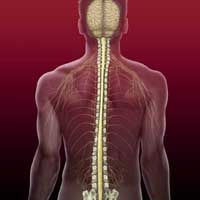Article
Genetic Influence on MS Disability: Look for Spinal Cord Gray Matter Atrophy on MRI
Author(s):
Research on spinal cord gray matter atrophy in terms of progressive multiple sclerosis has found the highest correlations between disability and gray matter volume loss within the spinal cord.

Progressive multiple sclerosis (MS) affects at least half of all 2.3 million MS patients in the world. Onset of progressive MS is the main determinant of disability.
Unfortunately, there is no effective treatment for progressive patients and they feel left out as new treatments continue to be developed for relapsing MS patients. So, finding treatments for progressive MS is a priority.
“Spinal cord gray matter atrophy? That could be it,” Bruce AC Cree, MD, PhD, a board certified neurologist from the University of California San Francisco, told audience members at the 2015 Annual Meeting of the Consortium of Multiple Sclerosis Centers in Indianapolis, Indiana. He added that 70-90 percent of progressive MS patients have spinal cord pathology.
Cree has served as an investigator on numerous clinical studies in multiple sclerosis. He said that research on spinal cord gray matter atrophy in terms of progressive MS has found the highest correlations between disability and gray matter volume loss within the spinal cord. That is the MRI measure to look at if you want to understand the influence on disability in MS and who gets progressive disease, he said.
He added that looking at white matter lesions and trying to understand the genetics of white matter lesions might not be the way to go because white matter lesions have a low correlation with disability.
“If you want to understand the genetic influence on disability, you want to look at a marker for that disability,” Cree explained. He believes that the marker for MS disability is going to be within the spinal cord as opposed to within brain imaging. “Maybe we’ll have a better way of doing genotype-phenotype correlations by not focusing on brain MRI, but focusing on spinal cord MRI,” he said.
The tissue injury is occurring within the brain matter. “But the key change in our thinking is that MS is not just a disease of the white matter and white matter inflammation, but the gray matter within the spinal cord, even more so than the gray matter in the brain to determine disability. And that’s the big change in thinking,” Cree said.
Advanced imaging and treatments are important, but so is genetics. He explained that genes will identify pathways and pathways will provide targets for treatments. Clinicians want to know who is at risk, although no one has that capability right now.
Currently, no one can predict who will get MS or what patients may develop progressive disease, but hopefully genetics will help figure that out.
Today, the major histocompatibility complex (MH) is the primary MS susceptibility locus. The major allele is HLA-DRB*15:01 and there is also a major protective allele, which is HLA-A*02:01. Following the identification of these important genes at the MHC, alleles of the IL2a and IL17a receptors were the first confirmed non-HLA MS risk conferring genes identified in a genome-wide association screen.
So what can doctors tell their patients? Cree told the audience that MS clusters in families and identical twins have a 30 percent risk of developing the disease, compared to fraternal twins and non-twin siblings, whose risk is 3-5 percent.




